I didn’t expect my youngest, Merrin to remember this song from her childhood so many years ago (I used to sing it on the river apparently) but when she called for it yesterday on ‘our’ old stretch of the Macalister, of course I instantly obliged – in my usual toneless manner.
Della and I were trying out our new Naturehike Pack Raft on the short downstream section below Cheynes Bridge (to 20 Acre Creek) which we used to canoe on Sundays a generation ago when the kids were just tiddlers.
This 1 1/2 hour section usually stretched out to a whole day with frequent swims, snacks, cold drinks etc (followed by dinner at the Won Loy restaurant in Traralgon on the way home as Della would be too tired by then to cook – especially with the next day being a work day)
So, you put in at Cheyne’s Bridge and disembark at 20 Acre Creek which is just before the road begins to climb up the hill towards Glenmaggie.
Aside: The song – ‘Weevils in the Flour’ (written originally by Dorothy Hewett) and put to music by my old (late?) friend Mike Leyden back in 1964 or thereabouts was first recorded by another (late) old friend Gary Shearston in 1965. I used to have an EP of Mike singing it, but somehow it disappeared into a juke box at my old ‘watering hole’ the Forest Lodge Hotel near Sydney Uni way back in 1974-5.
So this is just my memory of the words – not quite the same as those published in countless trade union songbooks since then, though I suspect my words are closer to Mike’s original recording. No way to know now I guess.
It recollects Dorothy’s (or someone’s imagined) childhood growing up in Newcastle during the Depression, not so different from mine really, though Dorothy etc were very left-wing – which I am not, so they (and the song) have a maudlin slant.
I worked from when I was 15 as a shift-work labourer at the BHP steel refinery (built on that island in the Hunter River) and various other refineries around Newcastle (the longest time – nearly four years – spent at Rio Tinto’s Sulphide Corp at Cockle Creek) during the 1960s, so I do remember the sentiment, “Where the hunger of the many filled the bellies of the few.”
I worked full-time in those ‘hellish’ refineries, and as well went to Newcastle Uni full-time off- shift usually of a night, yet I have fond memories of that time.
Though the wages were low by today’s standards back then, working men could afford to pay off a house eg at nearby Speer’s Point circa A$2000 at 3% interest, as well as own a car, raise a family and have their wife at home looking after the children when they were young – on ‘day’ wages of approx A$40 per week (after tax) – but with overtime, shift allowances etc often I took home as much as A$100 (though not much of it got past my mum!)
I am still friends with a co-worker at Sulphide (the late Peter McCave’s) daughter, Kim who grew up at Cockle Creek back when I worked there. She remembers swimming in the large bright green (copper) settlement dam on the hill – God alone knows how toxic that was! The whole plant was closed down and demolished because of ‘pollution’ twenty years ago.
Because we have almost totally destroyed the country since the 1960s it is no longer possible to support a family on a single labourer’s wage – but people are much greedier nowadays, and many people drink (and waste) much more too.
Perhaps the men had already won better conditions when I worked there in the 1960s, but my own father, Lawrence Jones worked at Commonwealth Steel (another similar Newcastle steel refinery) before and during WW2 (1930s & 40s – so Depression era) and he managed to raise us (a family of three) on the wages he earned there.
I have no recollection of us suffering miserably, though I do like the refrain (so pertinent for a ‘steel town’) “Men grow strong as iron upon…” I know I did. There are no ‘steel towns’ in Australia any more. And where exactly is our strength? Do we actually make anything still?
We should not always (often/at all) believe the sentiments of communists which Dorothy and the Leydens were – though they were the only successful communist businessmen I am aware of, and very fine people personally. Frankly I am/was proud of the great country we built with our own hands.
Hands like these: Here is my father, Lawrence working on a crane at Commonwealth Steel Newcastle circa 1940:
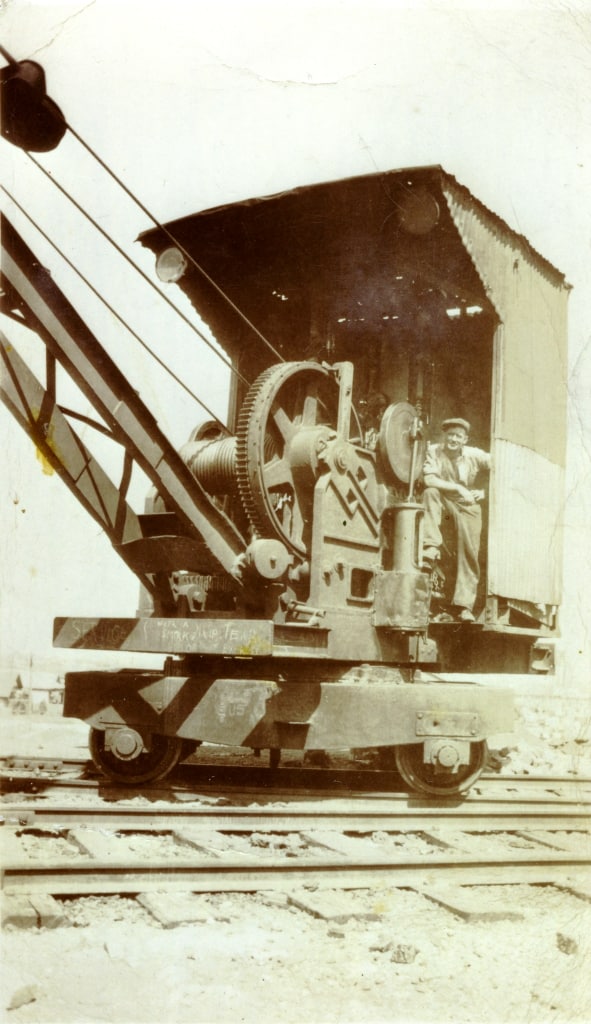
Still I love the song. Here is Gary Shearston’s rendition of it:
PS: When I was a kid my mother always ‘sifted’ the flour (for weevils) something completely unknown today. There were several different kinds. People used to say they added flavour (as well as protein) to the bread!
To continue: The river height was approx 1.7 metres on the Licola gauge when we were there yesterday. As I have said before (eg Carpe Diem) I believe the minimum gauge height to canoe from Licola to 20 Acre Creek is now about 1.60 on this gauge (unless you don’t mind doing a lot of getting in and out – and walking) – a height not so often achieved since they cleared (nearly all of) the willows from the river and destroyed the catchment with wildfires around 2006.
Before then you could canoe the river every day of the year for a century!
Here we were yesterday sculling along famously:
Checking out the condition of the river from The Devil’s Elbow – we decided not to run down from Basin Flat to Cheyne’s Bridge – our favourite bit (4 hours) : too muddy; too hard to see the possible obstacles and traps.
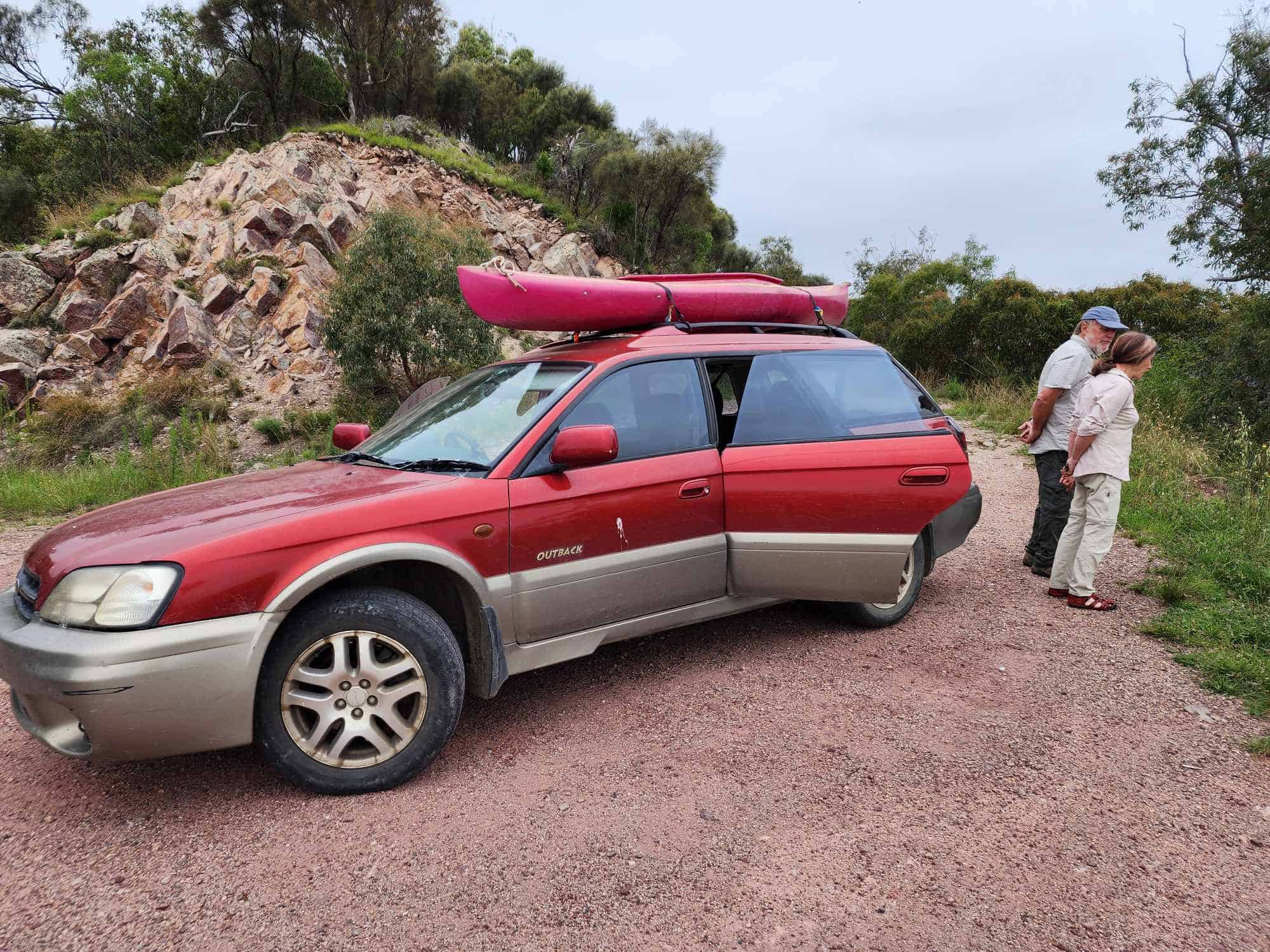
Had an ice cream at the revamped Licola Store instead. It is under new very friendly ownership with lots of new stock – definitely give it your custom. You can also stay at their camping ground.
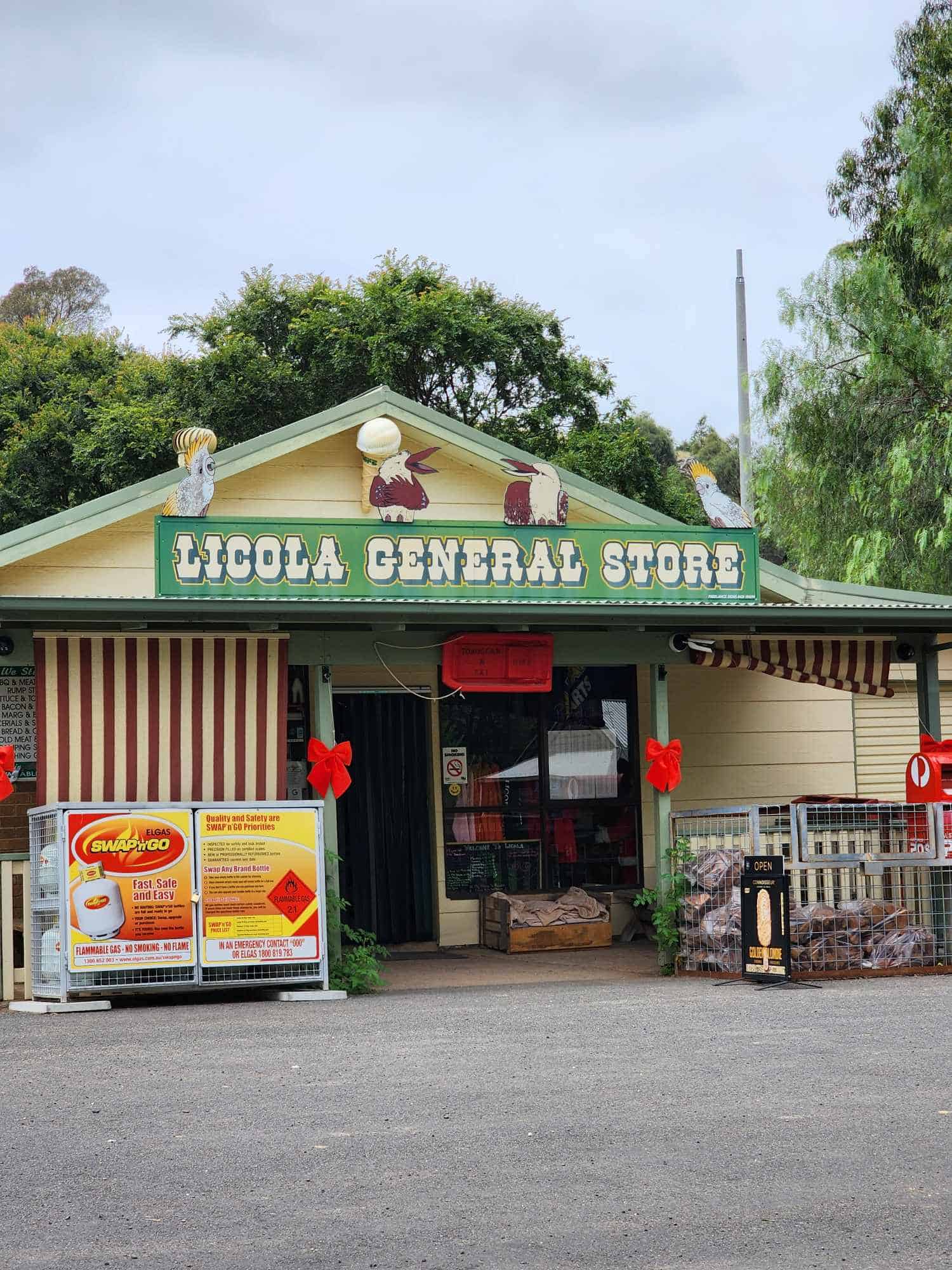
Hickey’s Creek – looking into the Avon Wilderness. A great 4WD trip by the way – and the excellent Tali Karng walk (which we have done, and must do again) is in there too.
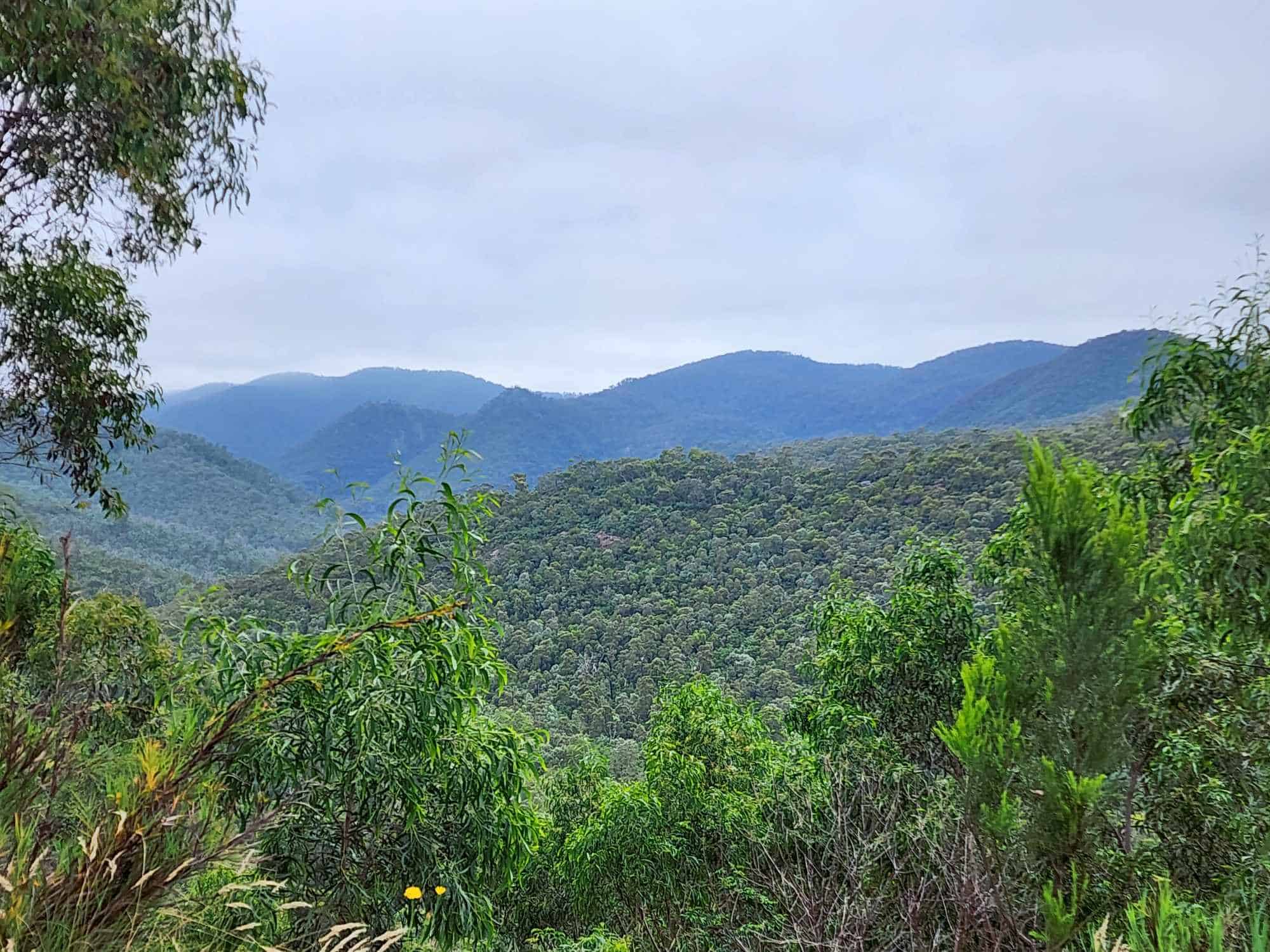
Setting out into this lovely rapid right under the bridge. There are about five small rapids in this section of the river. Nothing to really frighten or endanger children though.
There was a really neat grasshopper there:
Once when I was canoeing this section over thirty years ago I encountered an old man (older even than I am today) who informed me that I was trespassing on ‘his’ river. He did not mind though. I recollect his name was Marvin Gay but surely that is the hero of Robert Sheckley’s ‘Mindswap’?
He was sitting on the bank near the old dairy factory which was where the last big shed is on the true right bank before 20 Acre Creek.
Anyway, turned out he was right. When Premier Rupert Hamer ‘stole’ all our river for the public back in the 1970s those blocks with ‘older system’ titles had to remain in private ownership until the then current owner died – which I would presume has now happened.
The old farmer also told me that he still owned thousands of acres on the other side of the river which had been grazing land until destroyed by rabbits during the 1920s when heavy rain subsequently swept all the topsoil away so that today it is just poor quality forest.
The same thing has now happened to much of the catchment after the 2006 fires, so that the river comes up and goes down much more quickly than it used to – making it much less canoeable. Still enjoyable on a good day though. And you should try it. The swimming especially. I think Aussie Disposals <$3o rafts will get you through. Take some patches though. BTW: I toughened them up for Grade 3 water in this post: Home Made Pack Raft – and they worked.
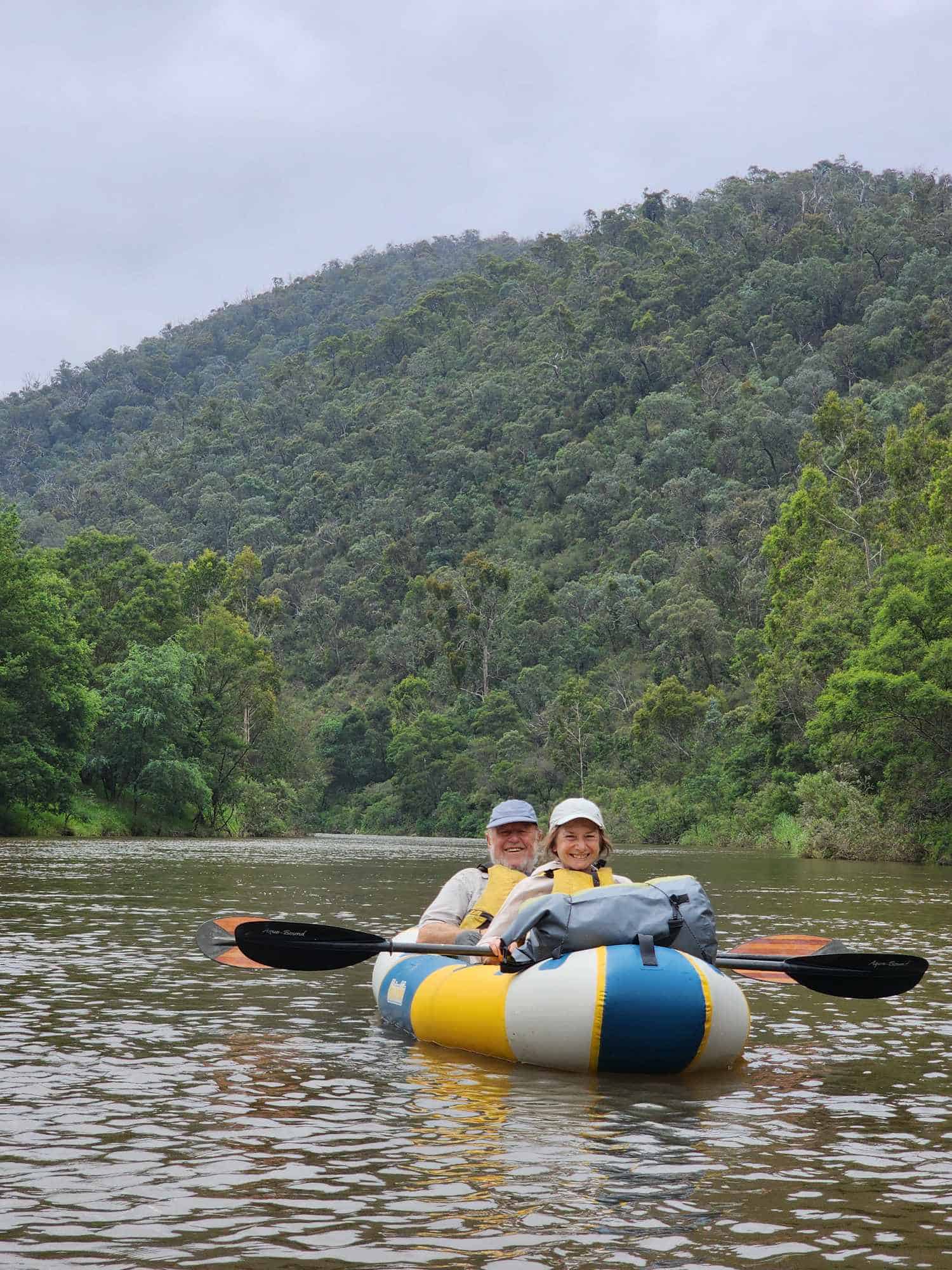
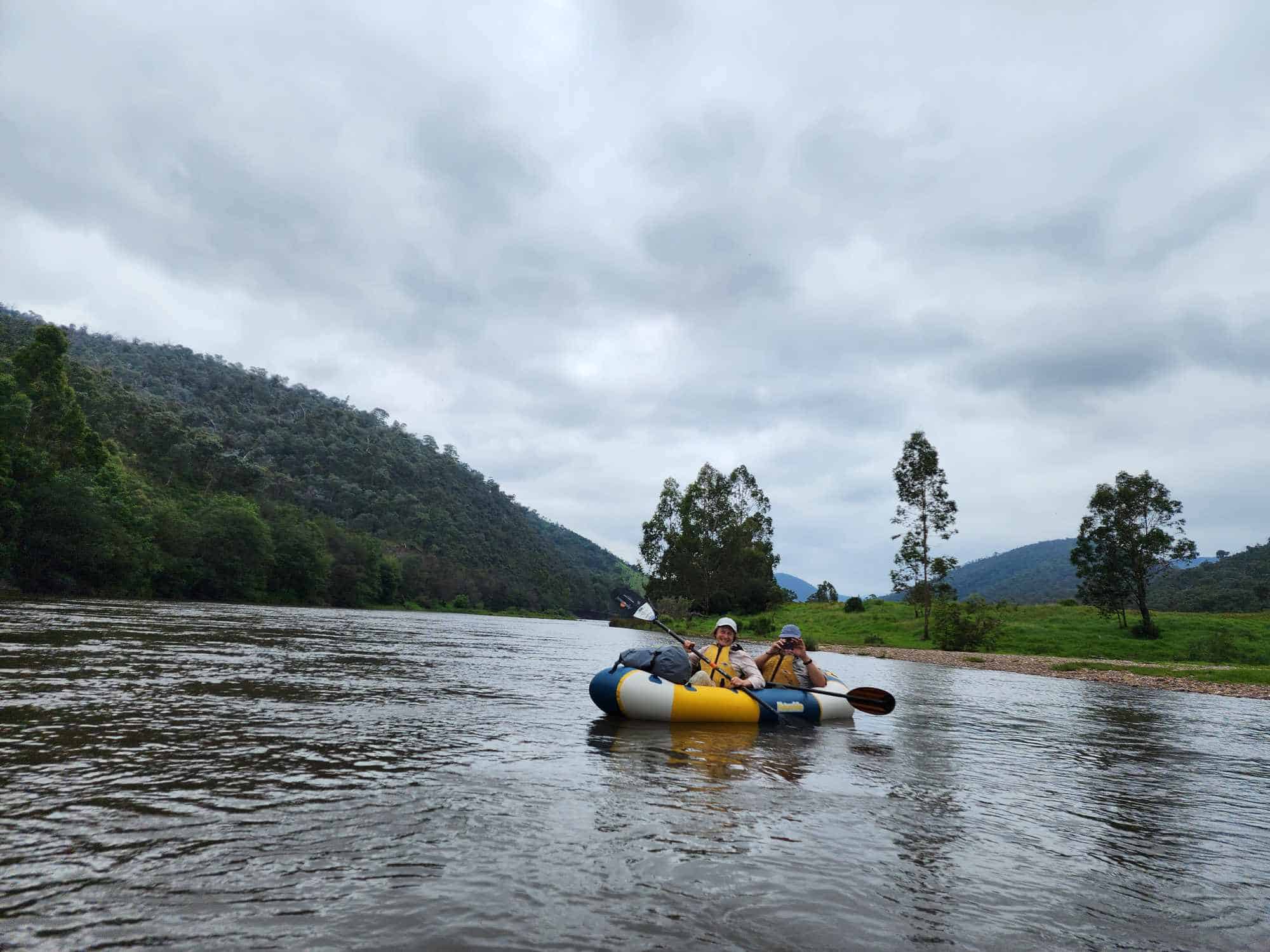
We are having fun anyway.
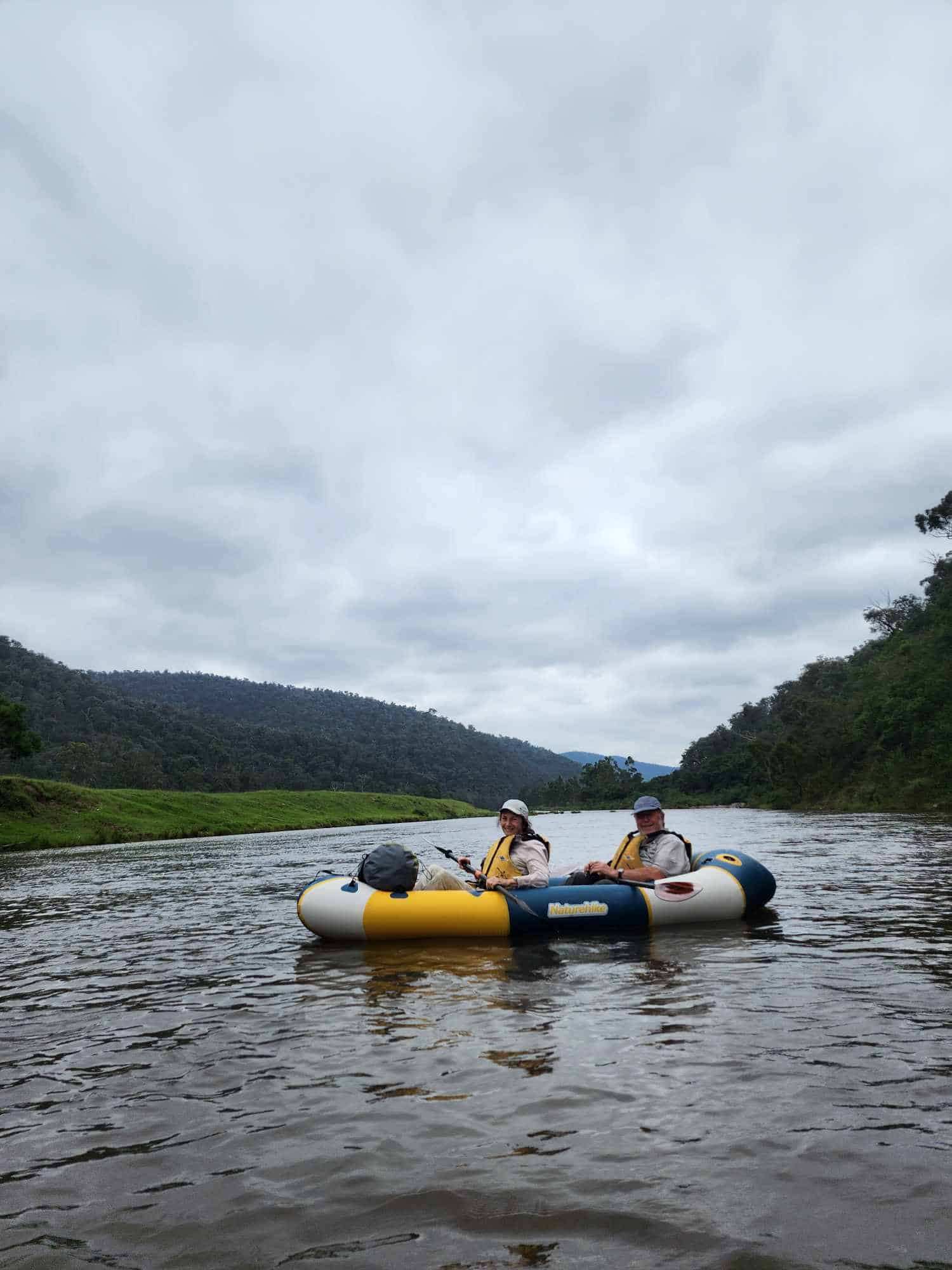
Great to be still having such fun in our seventies.
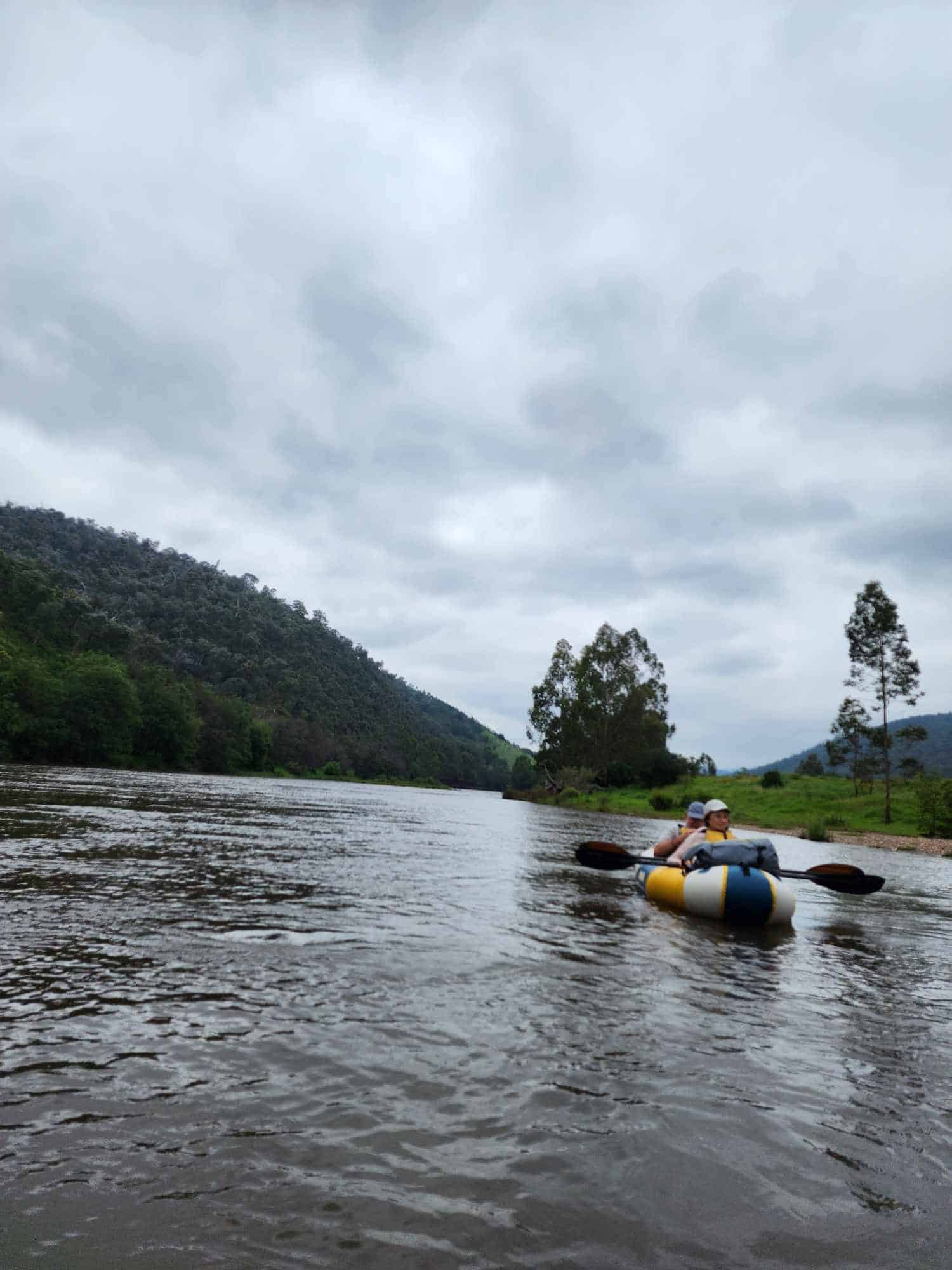
Merrin was enjoying herself too:
We used to call this spot ‘The Rams’ when the kids were young (30 years ago) – for obvious reasons. Merinos they were. It was a favourite shady swimming hole underneath the willows. These are some of the few willows to have survived the rapacious and fundamentalist DOC.
The willows protect the bank quite wonderfully and should never have been removed. Some are (mercifully) coming back. They also produce water and cool it so that when they are present there will always be more water in a river – and more fish and wildlife too.
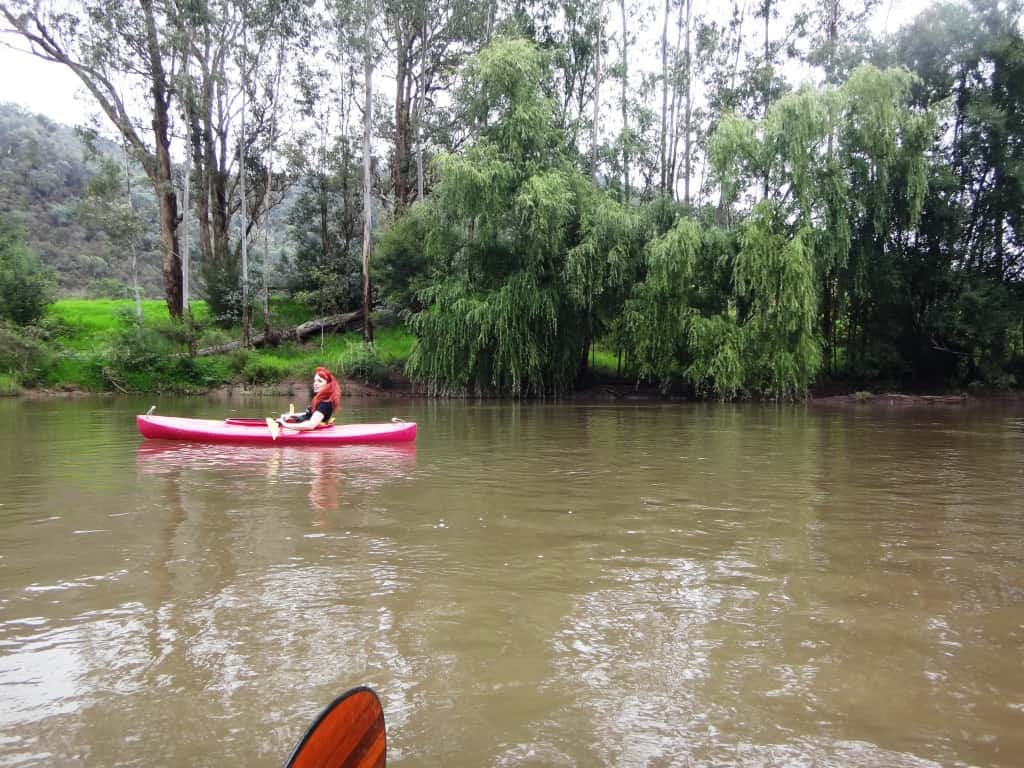
The next photo shows the opposite bank revealing what happens to the banks when you remove them. As you can see the gums are collapsing into the water. Over the years since this government mandated environmental destruction the river has become twice as wide and half as deep and its temperature several degrees warmer, so that it can rarely ever be canoed in the warmer months any more – even though it could every day for a century before that.
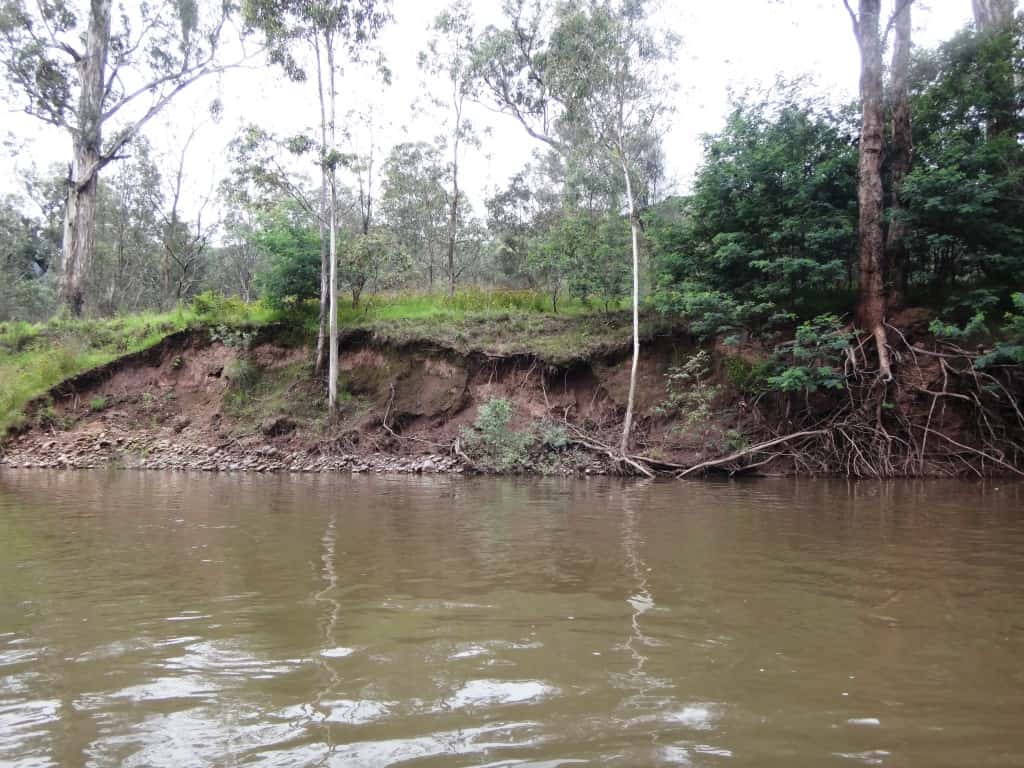
This is the best little drop on the river. Hurrah! Used to be lots of willows here too – as you can see from the collapsed banks..
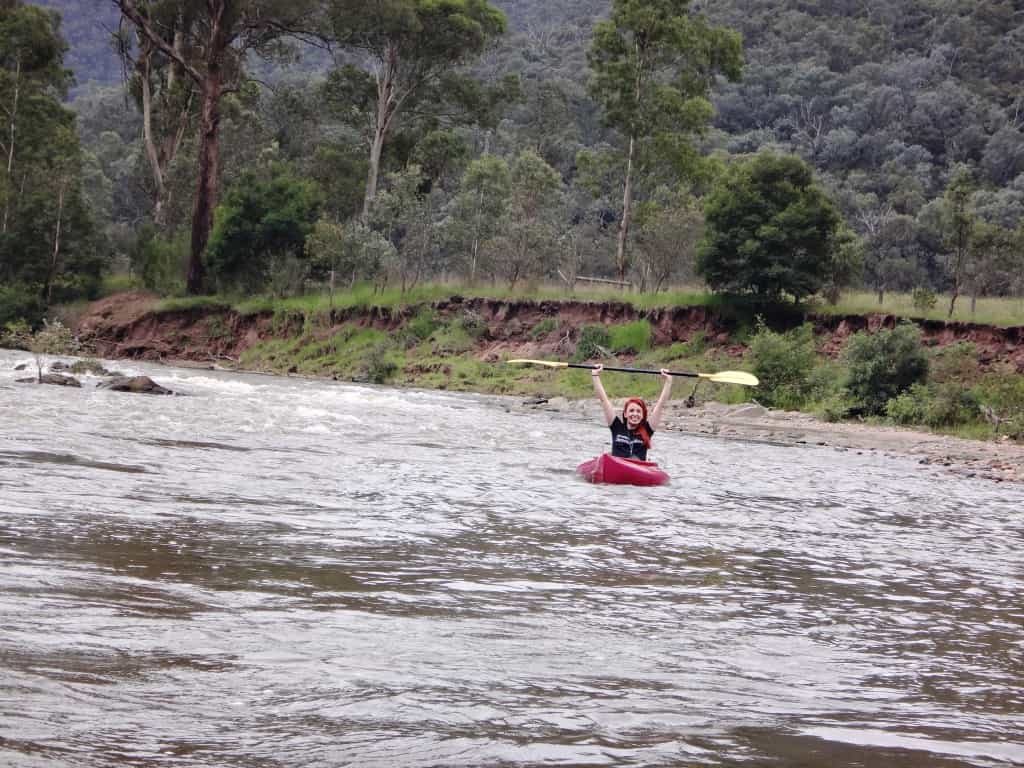
Our daughter Merrin having fun.
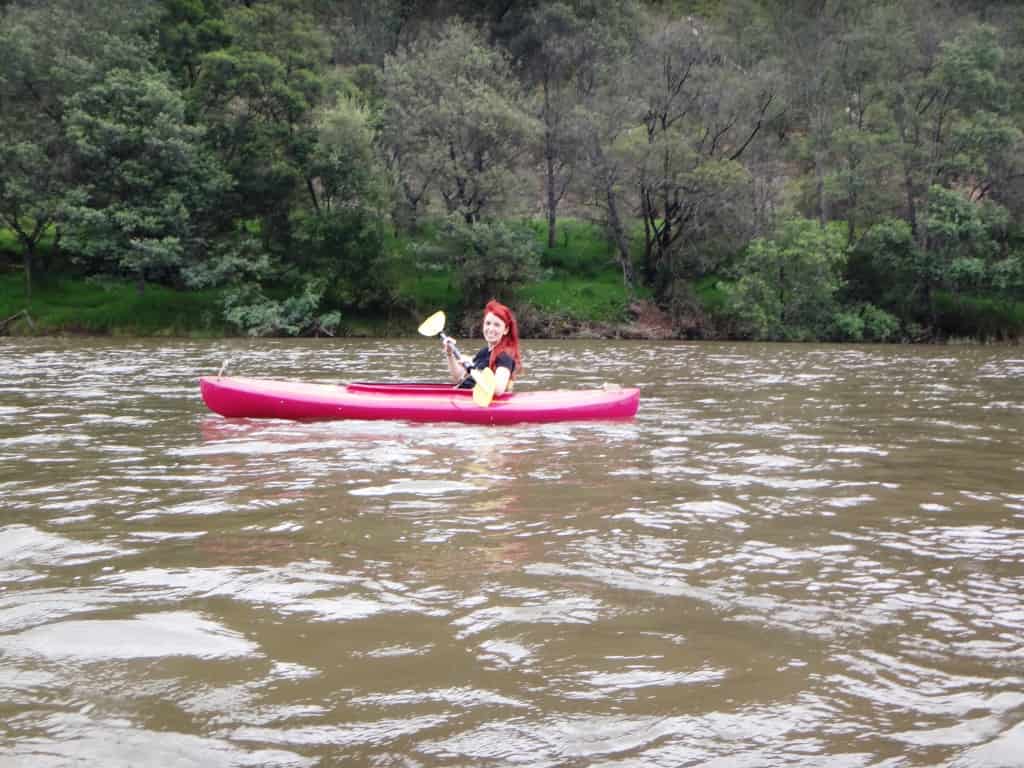
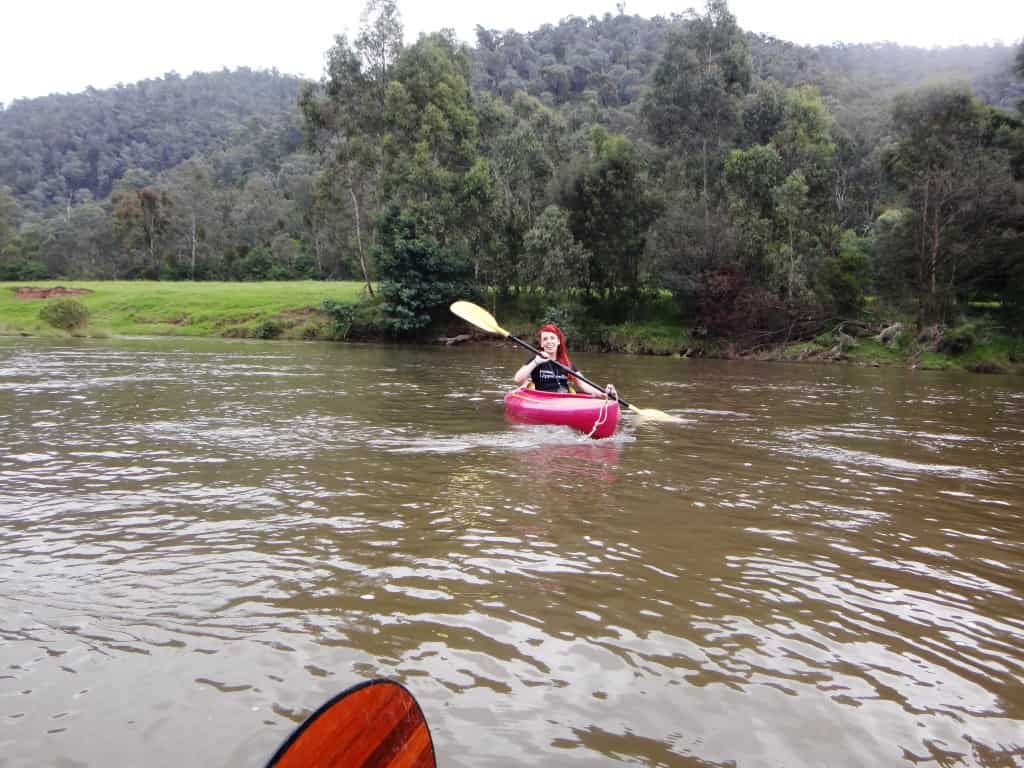
PS: The ‘island in the river’ in this short section of the Macalister (near ‘Bellbird Corner’) is best navigated on the right. Pull out into the bayou straight ahead when you get to 20 Acre Creek. The creek is marked by a sandbar jutting out into the river presently situated under a large black wattle.
NB: It is best to have walked down to the river when you drop off your car so that you can ensure you will recognise your exit point. It will be a long long walk back if you don’t – from Paradise valley!
Here are a couple of snaps of the kids I found from approx thirty years ago. Digital is so much better I know, but these are precious as film was so costly – each snap cost over $1 in last century money:
Bryn & Merrin – note she still has the same pink canoe now. She was blonde then, probably still is really.
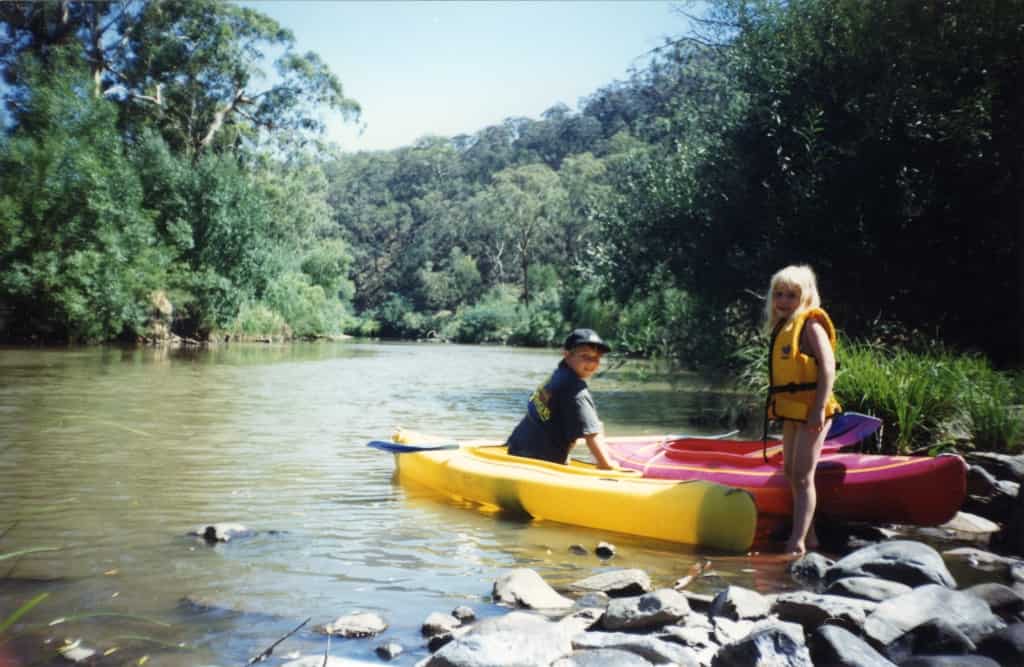
Merrin again. We used to travel together in the old Nylex Pioneer before she was able to paddle by herself.
All my kids paddled down through the Macalister Gorge (Basin Flat to Cheyne’s Bridge) by the time they were aged nine. (But they had been in boats for quite a bit before that).
Warning: There are at least three Grade 3 rapids in that section and many Grade 2 so do make sure you are confident and experienced before venturing it.
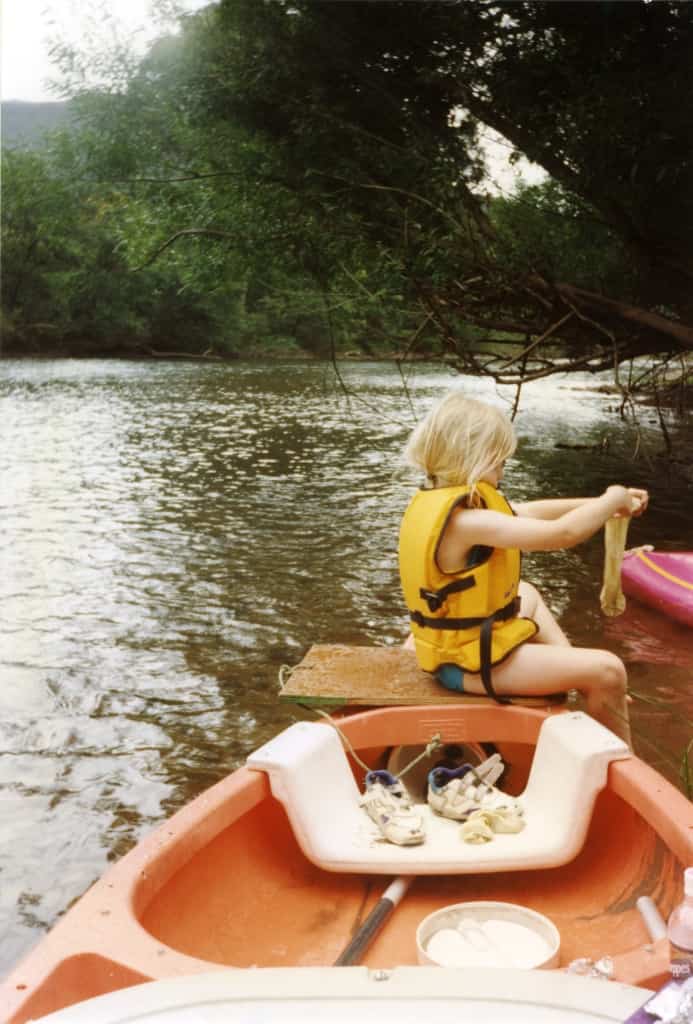
Bryn & Irralee:
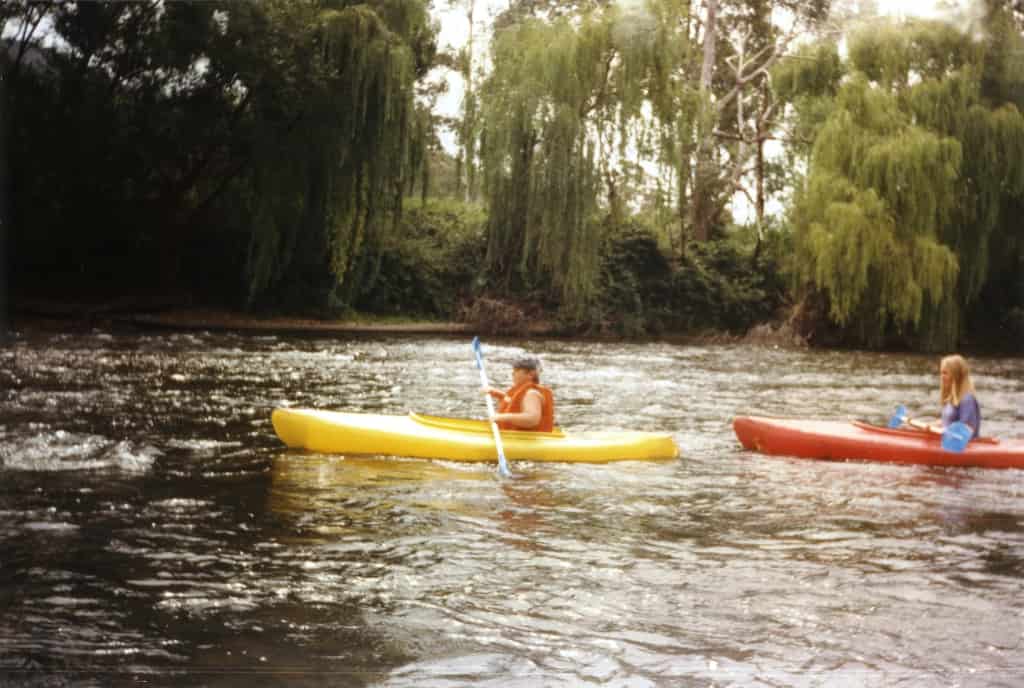
These were taken on the Wonnangatta River near Black Snake Creek (1995-6), a favourite campsite of ours back then. I will try to find some we took of the Macalister too.
This one was taken at Paradise Valley on the Macalister in 1994, aged 6:
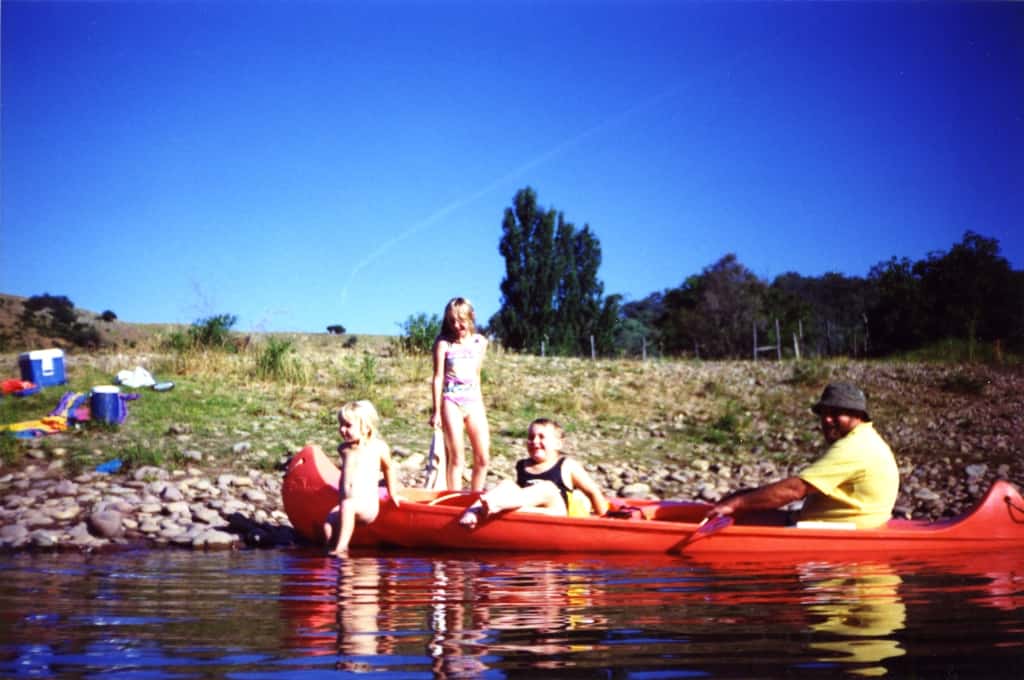
This one during a flood in our creek at home aged 5.
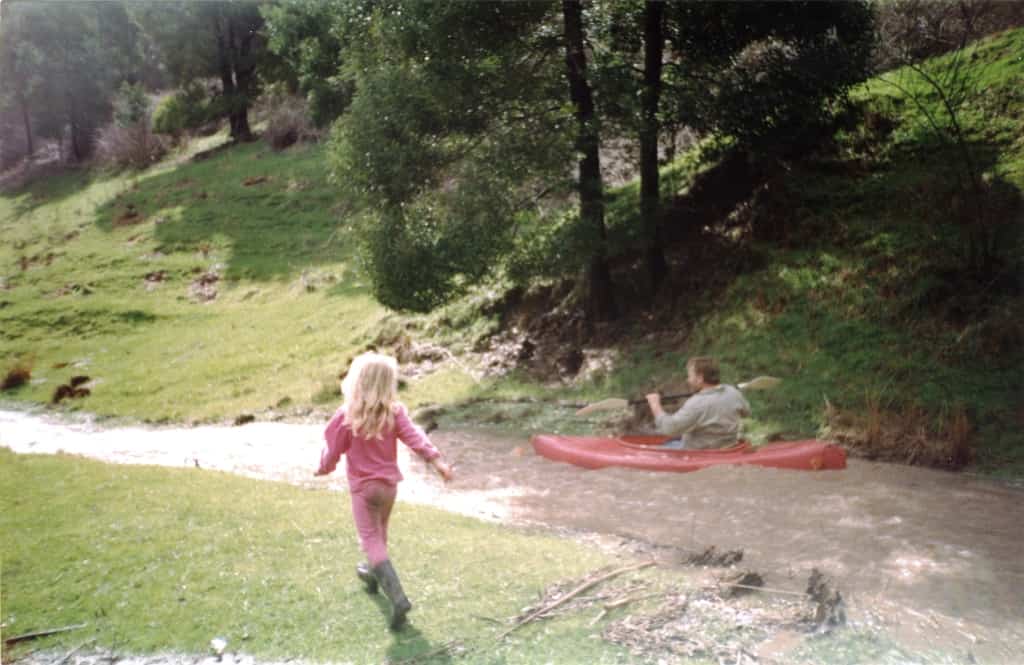
This one on the Tyers River, aged 4. She already had the style then you’ll notice.
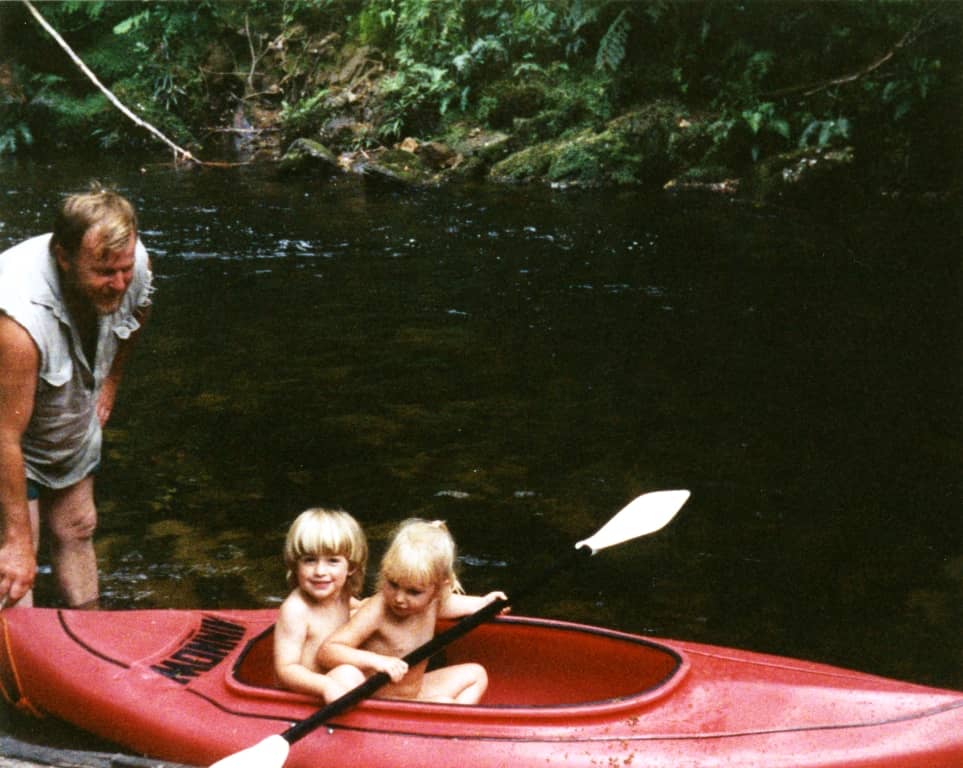
About Willows: I know they produce water because over the years I have planted vast numbers of trees, sometimes a couple of hundred in ant given year. And watched them grow. In Kyabram I planted willows in a very dry unirrigated spot in our turning circle and gums in an irrigated paddock. The middle of the turning circle turned green under the willows and a duck pond eventually appeared there – all by itself – so the willows were ‘making’ water. From the air, from under the ground? Who knows?
The gums dried out the irrigated paddock so nothing would grow under them.
Pliny noted a tree on the Canary (?) island of Hiero which produced so much water on an island where it never rained that in the mornings you could hold a jug against its trunk to fill as the water poured down the branches. The islanders had even constructed a small irrigation system based on the water these trees made from thin air. I suspect it was a foetid laurel.
Little forestry study has been done on different trees’ ability to ‘make’ water or ’cause’ rainfall but my own observations of individual tree species leads me to believe that it was the aboriginal burning which killed off so many desirable trees which could not tolerate the fire (and consequent low phosphorus) regime that turned the country from largely lush forest and grassland into semi- desert. So much for their having been good ‘custodians’!
There are not many really desirable native trees left except (mainly) those restricted now to rain forests where it mostly doesn’t burn. Instead I usually plant a mixture of various exotic trees both deciduous and evergreen, but always trees which display a certain ‘wetness’ such that they will support green grass under them and prevent fires from spreading. There are still some native trees like this too, but not many. I particularly like Moreton Bay Figs amongst the later.
See Also
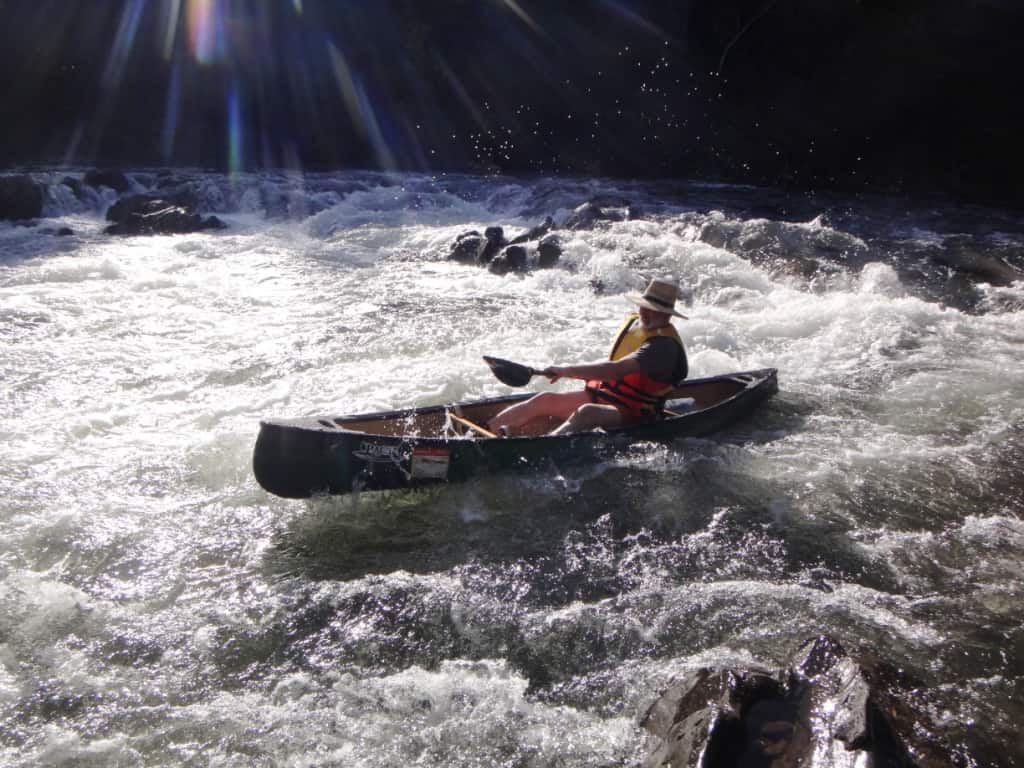
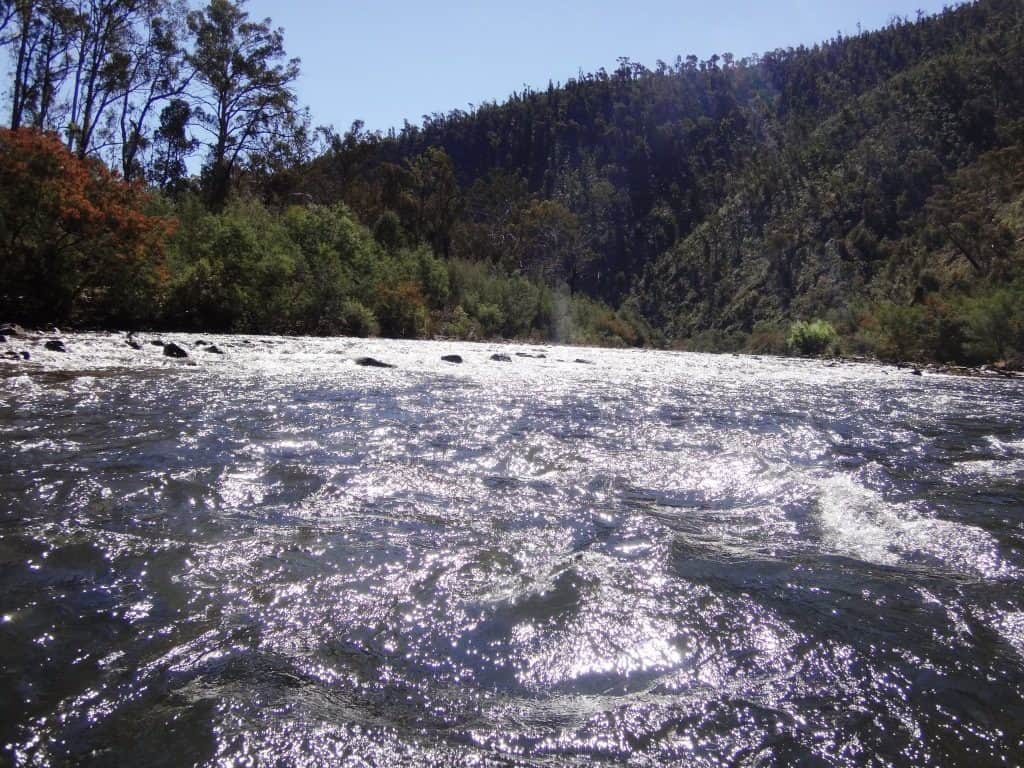
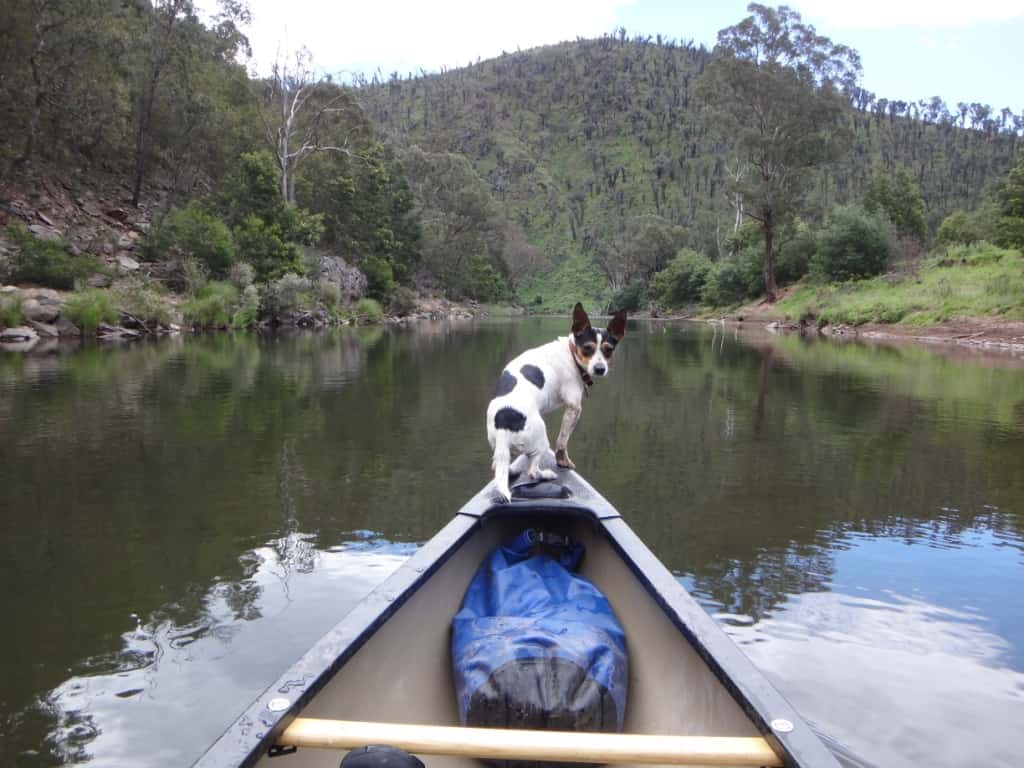
PPS: Evidently these are the words (now):
Weevils in the Flour Dorothy Hewett & Mike Leyden
On an island in a river,
How that bitter river ran,
We lived on scraps of charity
In the best way that you can.
On an island in a river,
Where I grew to be a man.
And just across the river
Stood the mighty BHP,
Poured pollution on the water,
Poured the lead of misery,
And its smoke was black as Hades
Rolling hungry to the sea.
Chorus (after each verse):
For dole bread is bitter bread,
Bitter bread and sour.
There’s grief in the taste of it
There’s weevils in the flour,
There’s weevils in the flour.
In those humpies by the river
Well, we lived on dole and stew,
While just across the river
Those greedy smokestacks grew,
And the hunger of the many
Filled the bellies of the few.
On an island in a river,
How that bitter river ran,
It broke the banks of charity
But it baked the bread of man.
On an island in a river
Where I grew to be a man.
Final Chorus:
For dole bread is bitter bread,
There’s weevils in the flour,
But man grows strong as iron on
Black bread and sour,
Black bread and sour.

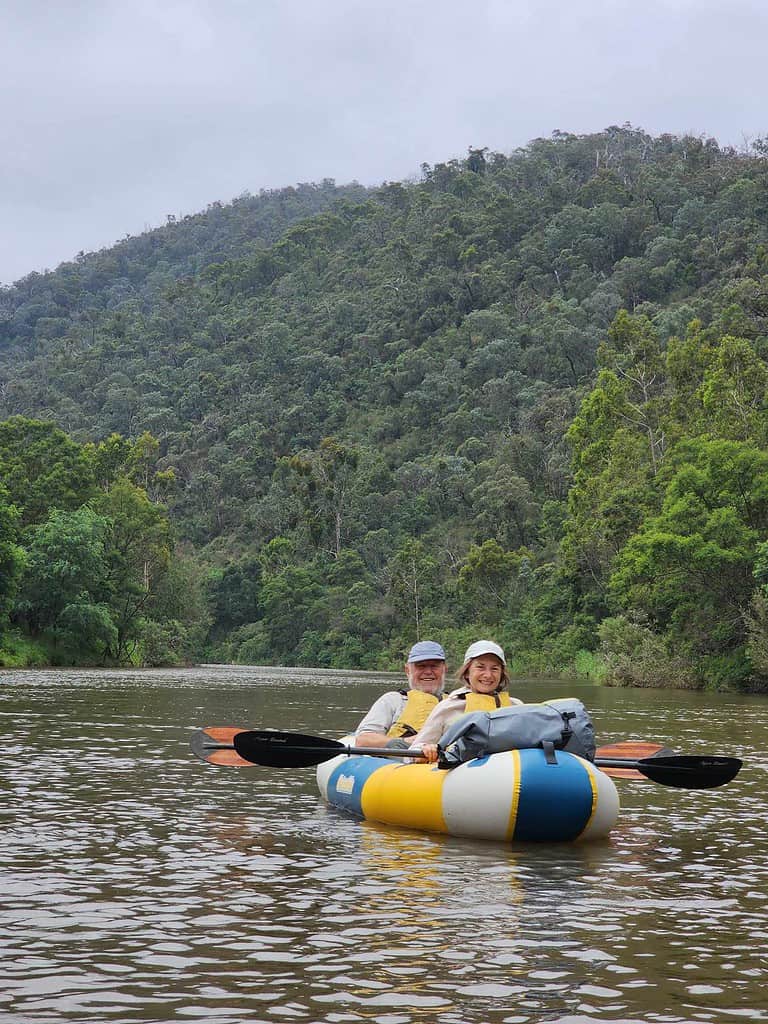
An enjoyable read. And Weevils in the flour reminds me of backpacking food from 40yrs ago. I liked the song as well.
Thank you Alan. When I was a kid one always sifted the flour for weevils – almost unknown today. Cheers, Steve.